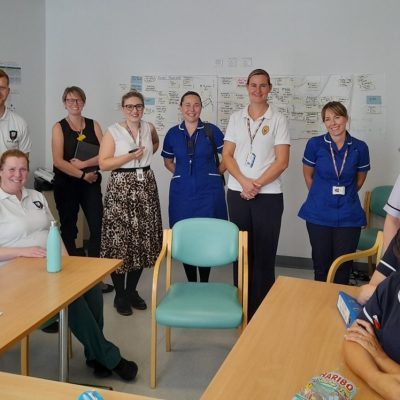Newcastle Improvement has been working with our Integrated Spinal team on a process mapping approach to improve the patient journey from admission to discharge.
Understanding your opportunity is at the heart of any successful quality improvement project and process maps are an important way of making improvements by creating a visual representation of the relevant steps in a clinical or non-clinical task or pathway, or a patient’s journey. The mapping process helps a team to fully understand their improvement opportunity by gaining an overall picture.
Process maps also:
- Capture the reality of the process, exposing areas of duplication, waste, unwarranted variation and unnecessary steps.
- Involve a range of people from across the pathway, everyone can discuss the actual steps taken through the journey from their own perspective and take the time to consider what works well or what could work better from a patient perspective.
- Provide an opportunity to air frustrations and challenges as it is crucial to consider how to address these frustrations and generate ideas for change.
- Help to build good working relationships within a team and across functional and organisational boundaries – with everyone focused on making improvements that will have the biggest impact for better patient and staff experience.
The Integrated Spinal Team has been working with Newcastle Improvement to put this into practice to improve their patient journey, with a hope to improve patient flow and ensure patient recovery is optimised.

The teams came together to process map the repatriation of patients from start to finish, with all steps and decision points identified. By doing this, they were able to see the full patient pathway and the different tasks they each do to support repatriation across the region and beyond. Using the process map, the teams were able to pinpoint steps in the pathway that caused issues or frustrations for both staff and patients. Gold standards of care and good practice were also pinpointed where things worked well and could be repeated elsewhere in the pathway. The teams have worked together and identified change ideas that they’re going to test to help improve the pathway and patient experience of repatriation.
Using process mapping before making any service changes helps you gain a better understanding of how a whole patient pathway works. If changes are made without understanding the current processes sufficiently well, unintended consequences such as creating problems at another point in the journey may result
If you are a member of staff who would like more information, please visit our Intranet.
